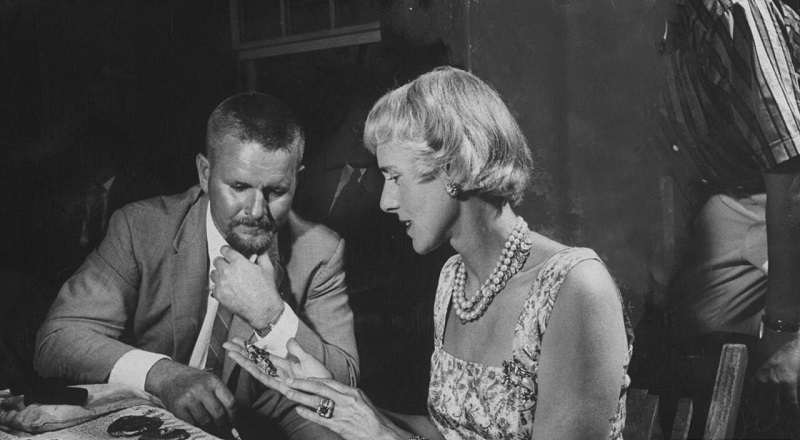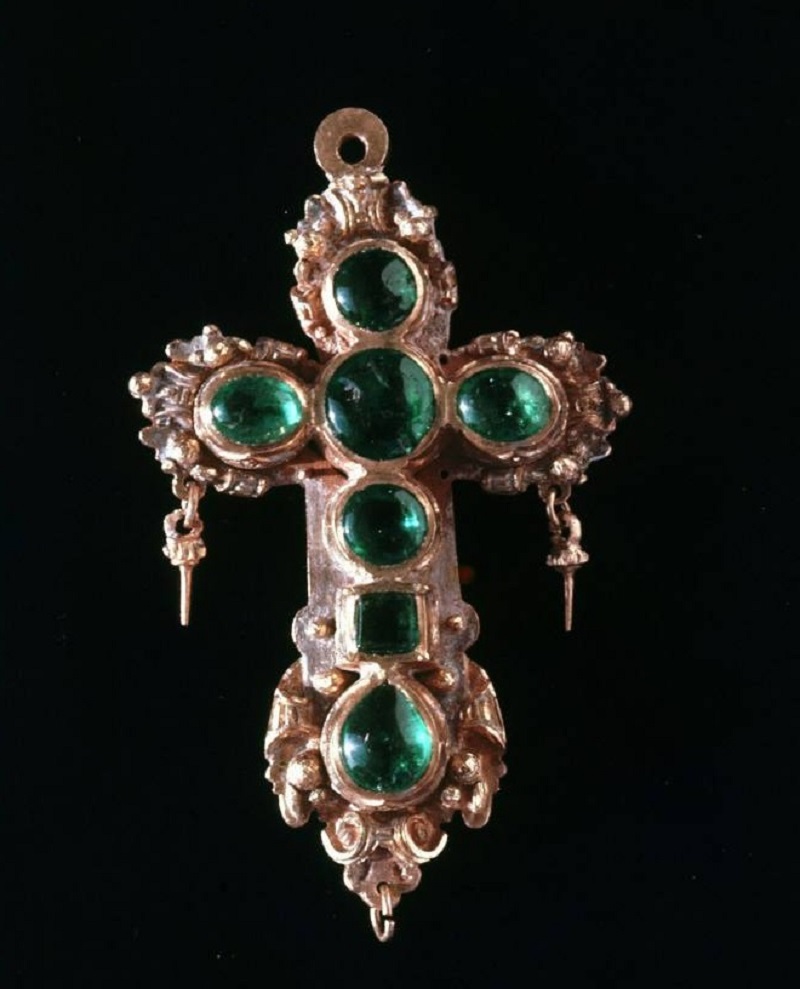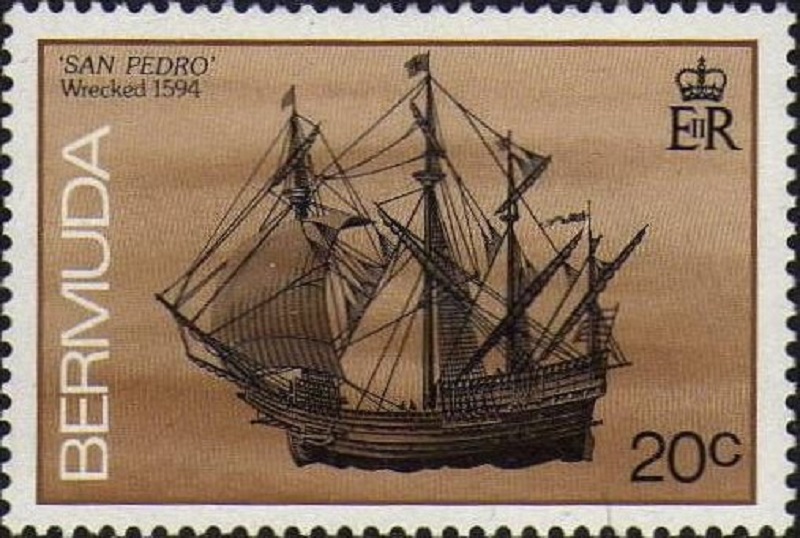Spain Charts Bermuda Treasure Fleet Wrecks
Beginning in the early 16th century, Spanish and Portuguese seafarers started using Bermuda as a mid-Atlantic navigational marker on their way to and from the Caribbean and South America.
Many ships which strayed too close to the island’s reefs met with disaster during what has been termed the European Age of Discovery, a period lasting from the 15th through the 17th centuries.
In fact, the oldest wreck yet discovered on Bermuda’s reefs, the 350-ton Spanish galleon San Pedro, dates from 1594.
Visiting American journalist, politician and diplomat Clare Boothe Luce holds the Tucker Cross as she studies treasure recovered from the San Pedro with Bermudian diver Teddy Tucker:
Part of a treasure fleet on a voyage from Cartagena, Colombia to Cadiz, the coral-encrusted remains of the ship’s structure were discovered by legendary Bermudian diver Teddy Tucker in 1951, who found his fabled emerald-studded gold cross and a fortune in other treasures at the wreck site.
In 1975, it came to light that the cross had been stolen and replaced with a plaster and plastic substitute when it was being moved from the Bermuda Aquarium, Museum & Zoo, where it had been on display, to the new Bermuda Maritime Museum [now the National Museum of Bermuda]. It has never been recovered.
Recently it has been reported that a team of researchers at Spain’s Ministry of Culture have embarked on a major, multi-year project to chart the final resting places of all the ships which helped to create and sustain that country’s New World empire.
Led by archaeologist Carlos León, the team has so far logged 681 shipwrecks off Bermuda, Cuba, Panama, the Dominican Republic, Haiti, the Bahamas, and the U.S. Atlantic coast.
At the time of its discovered in 1951, the emerald-studded Tucker Cross was the single most valuable piece of treasure ever recovered from the ocean:
The Bermuda wrecks include the San Pedro and four sister ships from the same treasure fleet, all of which sank in a November, 1594 storm which drove them onto the island’s reefs. The mass catastrophe cost the lives of 1,250 Spanish mariners.
The precise wreck sites of the other four treasure ships from the fleet have yet to be discovered.
The Spanish researchers have scrutinized hundreds of documents in the General Archive of the Indies in Seville and Madrid’s Naval Museum, along with 420 old maps, in order to create what has been described as “the most extensive guide to Spanish shipwrecks and treasure to date.”
The project is part of a National Plan for the Protection of the Cultural Underwater Heritage of Spain, developed according to a United Nations Educational, Scientific and Cultural Organisation [UNESCO] 2001 convention to identify and conserve wreck sites.
Bermuda issued a stamp commemorating the 1594 San Pedro wreck in 1986:
Treasure hunters and shipwreck historians estimate as many as one thousand ships have met their fate in Bermuda’s waters over the last 400 years. As of 2019, 300 wreck sites had been pinpointed.
“A 19th century historian aptly dubbed the island a ‘graveyard of ships’,” reported Skin Diver magazine in 2018. “The waters around Bermuda conceal more wrecks than any other area in the western hemisphere, with the possible exception of the Florida Keys.”
You can read a piece The Guardian ran on the Spanish shipwreck project here.
Read More About
Category: All




